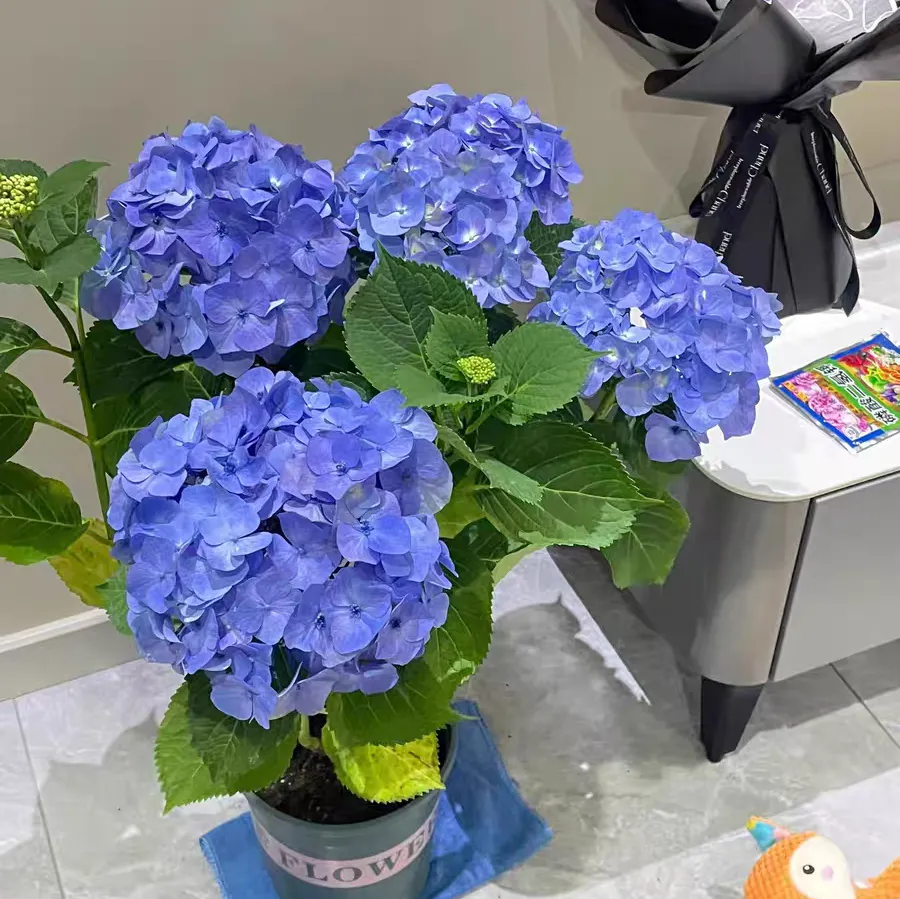Recommended Most Popular Varieties of Hydrangeas

Share with
There are many types of hydrangeas, and here are some popular varieties that are perfect for beginners and unlikely to disappoint:
### **1. Endless Summer**
- Blooms on both old and new wood, flowering from summer through autumn.
- Features large, round flower clusters that can be color-adjusted! They turn dreamy blue in acidic soil and soft pink in alkaline soil.
- Extremely hardy, heat-resistant, and cold-resistant—ideal for beginners to grow with ease.
### **2. Hanabishu**
- The flower clusters are as full as small pom-poms, with delicate, layered petals.
- Also color-adjustable, with sturdy stems that withstand summer sun exposure.
### **3. Fairy's Kiss**
- Petals resemble vintage roses with double-layered ruffles, giving a textured look.
- Starts as cream-white and gradually turns pinkish-purple, showcasing multiple colors on one plant. Note: It blooms on old wood, so avoid pruning the wrong branches in winter.
### **4. Mariesii**
- Flowers have white edging, resembling an elegant ink painting.
- Branches are relatively soft and may droop after blooming; use a support stake. Blooms on both old and new wood, with more flowers on old wood.
### **5. Mona Lisa**
- Features soft pink or blue petals with white serrated edges.
- Blooms on both old and new wood, but branches are not very sturdy—support them when the flower clusters are heavy.
### **6. Tree Hydrangea (e.g., 'Bella Anna')**
- Grows into a tall shrub (2-3 meters), with a straight and upright shape.
- Produces massive white flower clusters in summer, up to 40 cm in diameter—truly stunning!
- Extremely cold-resistant, suitable for direct planting in northern gardens as a striking background plant.
### **Care Guide**
#### **Light**
- Avoid direct暴晒. In spring and autumn, provide 4-6 hours of diffused light; shade thoroughly in summer to prevent leaf scorching.
- In winter, allow more sunlight due to weaker light.
#### **Watering**
- Large leaves mean high water demand, but avoid overwatering. Water thoroughly when the soil surface feels dry.
- In summer, mist the surroundings to increase humidity; reduce watering in winter, keeping the soil slightly moist.
#### **Soil Mix**
- Prefers loose, well-draining acidic soil. Use a mix of leaf mold, peat, and perlite. Apply iron sulfate occasionally to enhance blue hues in blue-flowered varieties.
#### **Fertilizing**
- Apply compound fertilizer every two weeks during the growing season.
- Use potassium dihydrogen phosphate from June to July to promote bud formation.
- Stop fertilizing during winter dormancy.
#### **Temperature**
- Optimal growth at 18–28°C. Move indoors if winter temperatures drop below 5°C, and relocate to a cool, ventilated area if summer temperatures exceed 35°C.
#### **Pruning**
- Remove faded flowers promptly. For varieties that bloom on old wood, leave 2–3 pairs of buds; for new wood bloomers, prune more aggressively.
- Cut back dead or diseased branches in winter.
#### **Pest and Disease Control**
- Prone to powdery mildew and aphids. Treat with fungicides (e.g., carbendazim) or insecticides (e.g., imidacloprid) at the first sign of issues.
- Ensure good air circulation to prevent diseases.
With these varieties and care tips, you can enjoy vibrant hydrangea blooms in your garden or home! 🌸
Tagged in :




Leave a Reply